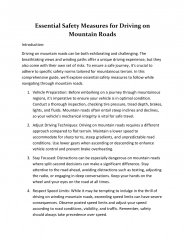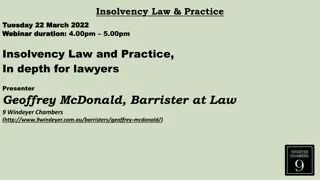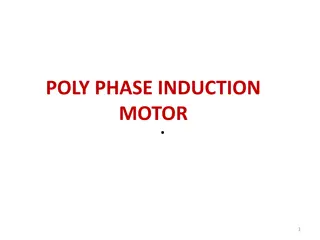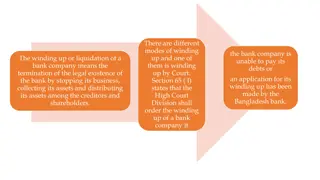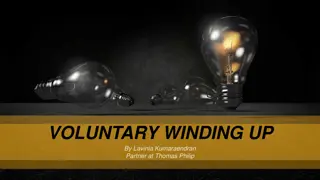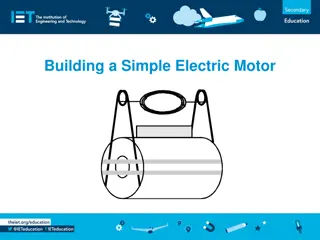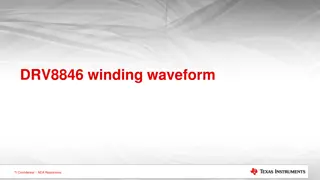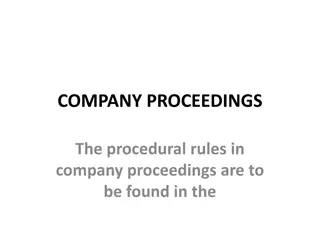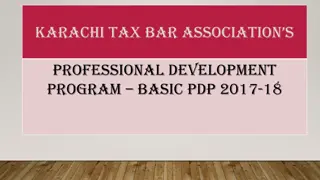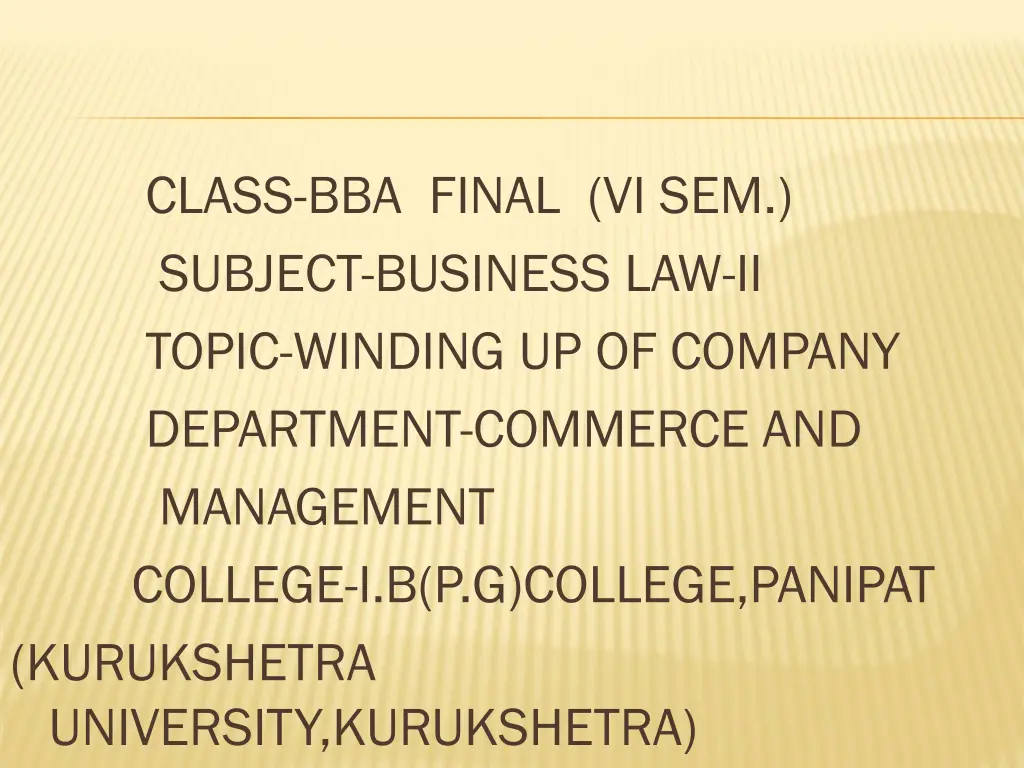
Understanding Business Law: Winding Up of Company Process
Explore the meaning, modes, and procedures of winding up a company in Business Law. Learn about the different ways companies can be dissolved, such as voluntary winding up and compulsory winding up by the Tribunal. Discover the petition and application processes involved in the closure of a company.
Download Presentation

Please find below an Image/Link to download the presentation.
The content on the website is provided AS IS for your information and personal use only. It may not be sold, licensed, or shared on other websites without obtaining consent from the author. If you encounter any issues during the download, it is possible that the publisher has removed the file from their server.
You are allowed to download the files provided on this website for personal or commercial use, subject to the condition that they are used lawfully. All files are the property of their respective owners.
The content on the website is provided AS IS for your information and personal use only. It may not be sold, licensed, or shared on other websites without obtaining consent from the author.
E N D
Presentation Transcript
CLASS-BBA FINAL (VI SEM.) SUBJECT-BUSINESS LAW-II TOPIC-WINDING UP OF COMPANY DEPARTMENT-COMMERCE AND MANAGEMENT COLLEGE-I.B(P.G)COLLEGE,PANIPAT (KURUKSHETRA UNIVERSITY,KURUKSHETRA)
MEANING OF WINDING UP Winding up/liquidation represents the last stage in company s life. It is a proceeding by which a company is dissolved. The company s assets are disposed of , the debts are paid off out of the realised assets , and the surplus , if any is then distributed among the members in proportion to their holdings in the company
MODES OF WINDING UP There are two modes of winding up of a company. Winding up by the Tribunal Voluntary winding up which may be (a) members voluntary winding up OR (b) creditors voluntary winding up
WINDING UP BY TRIBUNAL The is also known as compulsory winding up and a company may be wound up in the following cases. Special resolution of the company Default in delivering the statutory report to the Registrar Failure to commence/suspension of business Reduction in membership Inability to pay its debts
PETITION An application to the Tribunal for the winding up of a company is made by a petition . This may be presented in following cases: Petition by the company Petition by any creditor/creditors Petition by any contributory/contributories Petition by Registrar Petition by central Government
APPLICATION FOR WINDING UP Application by a company for its compulsory wounding up. As voluntary winding up is quite rare.it is member wish to liquidate their company. They will do and does not involve a court hearing and its so cheaper. Any creditor including a contingent or prospective creditor an application to the court for winding up of a company shall be presented by a contingent or prospective creditor.
APPLICATION BY CREDITORS Usually the vast majority of application for compulsory winding up are presented by the creditor on the ground contained. for example the co. is unable to pay debts. Permits a creditor a contingent or a perspective creditor to apply for compulsory winding up even though their debts are not immediately due and payable at the date of application.
APPLICATION BY CONTRIBUTORIES A contributory or any person who is personnel representatives of a deceased contributory or the trustee in bankruptcy. A contributory includes: i. A person liable as a member or past member to contributor to assets of the company in the event of winding up and ii. A holder of a fully paid share in the company
EFFECTS OF WINDING UP ORDER The effect of order are: 1. Every transfer or shares or alteration in the status of a member made after the commencement of winding up is void unless the court otherwise orders. 2. Any transfer of property made within one year before presentation of winding up petition is void unless otherwise ordered by the court. 3. On winding up order provisional manager ceases to hold office unless the court directs otherwise.
VOLUNTARY WINDING UP Voluntary winding up means winding up by the members or creditors of a company without interference of the court. RESOLUTIONS FOR WINDING OF A COMPANY: The resolution may be of two types: a. Ordinary resolution b. Special resolution
ORDINARY AND SPECIAL RESOLUTION 1. ORDINARY RESOLUTION: It is passed when the AOA provides that the co is wound up when the specified period elapsed. 2. SPECIAL RESOLUTION:It requires no ground for winding up and is used in any other case such as a solvent liquidator.
TYPES OF VOLUNTARY WINDING UP A voluntary winding-up may be : (a) a members' voluntary winding-up (b) a creditors' voluntary winding-up
MEMBERS VOLUNTARYWINDING UP Members voluntary winding up takes place only when the company is solvent. In case of members voluntarily winding up, Board of Directors have to make a declaration to the effect, that company has no debts.
CREDITORS VOLUNTARY WINDING UP Where the resolution for winding up has been passed, but the directors are not in a position to give declaration on the liability of company, they may call meeting of the creditors, for the purpose of winding up. It is the duty of board of directors to present full statement of a company affairs and list of the creditors along with their dues before the meeting of the creditors
CONTD Whatever the resolution passes by the company in meeting shall be given to the registrar within ten days of its passing. Once the company is fully wound up its assets and properties are sold or distributed shall be pay off to the creditors in equal proportion and therefore any property or money are left may be distributed among the members according to their rights and interest in the company.

